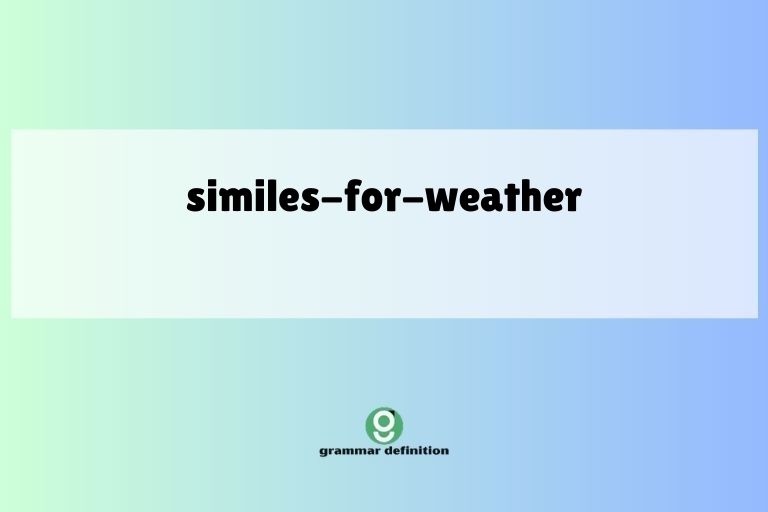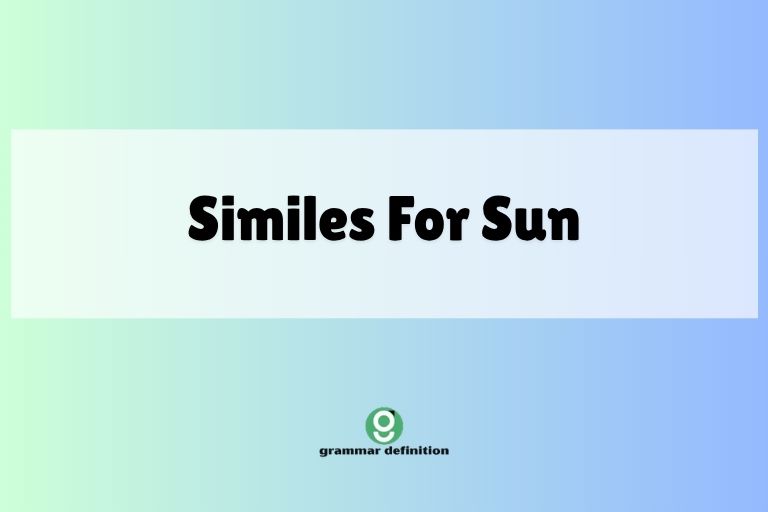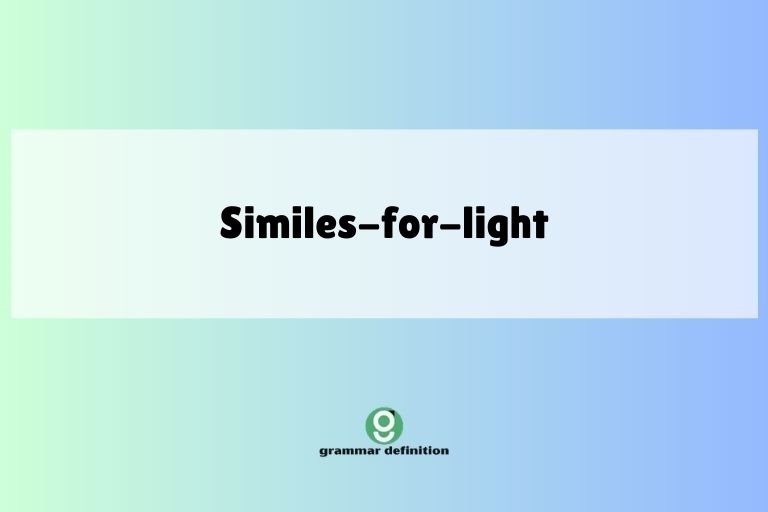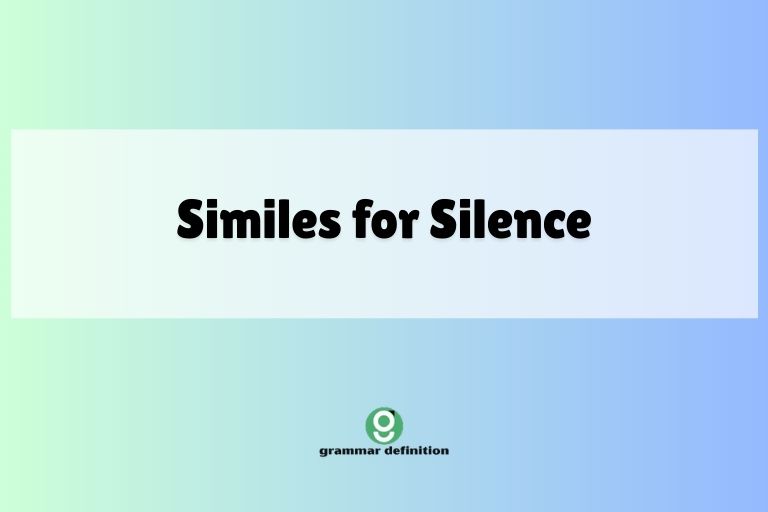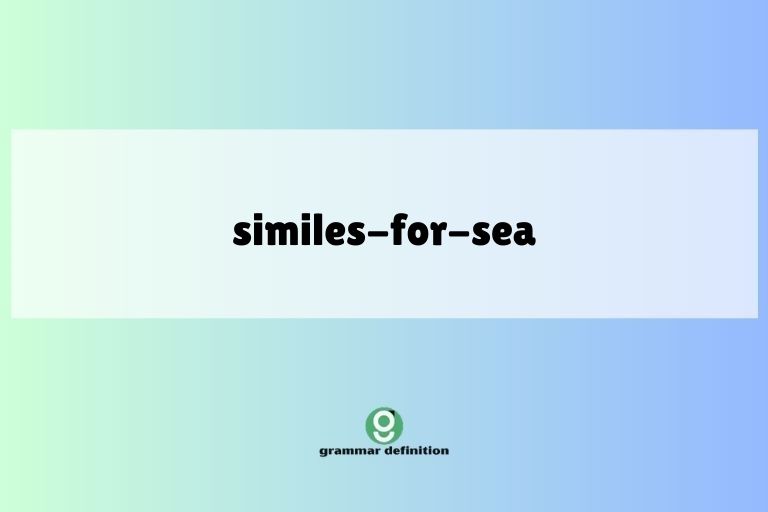Similes for Basketball: A Slam Dunk Guide to Figurative Language
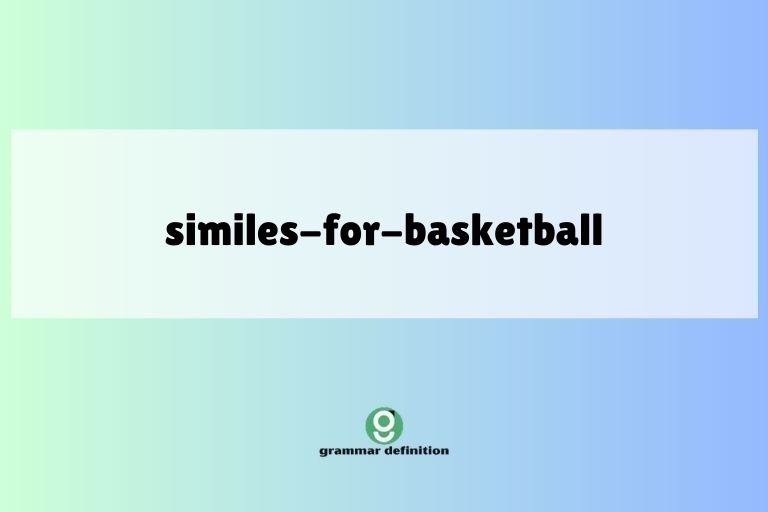
Similes are powerful tools in the English language, allowing us to create vivid comparisons and paint memorable pictures with words. In this comprehensive guide, we’ll explore the world of similes, specifically focusing on those related to basketball.
Understanding and using similes effectively can enhance your writing, making it more engaging and descriptive. Whether you’re a student, writer, or simply an English enthusiast, this article will provide you with the knowledge and practice you need to master basketball-themed similes.
Get ready to elevate your language game!
This article is designed for learners of all levels, from beginners to advanced. We will break down the concept of similes, examine their structure, and provide numerous examples related to the exciting world of basketball.
By the end of this guide, you’ll be able to recognize, understand, and create your own compelling similes.
Table of Contents
- Introduction
- What is a Simile?
- Structural Breakdown of a Simile
- Types of Similes
- Examples of Basketball Similes
- Usage Rules for Effective Similes
- Common Mistakes with Similes
- Practice Exercises
- Advanced Topics in Similes
- Frequently Asked Questions
- Conclusion
What is a Simile?
A simile is a figure of speech that compares two different things using the words “like” or “as.” The purpose of a simile is to create a vivid image or to emphasize a particular quality of one of the things being compared. Similes are a fundamental part of figurative language, adding depth and color to writing and speech.
They help to make abstract ideas more concrete and understandable by relating them to something familiar.
Essentially, a simile asserts a similarity between two unlike things. The comparison isn’t literal; rather, it’s intended to highlight a shared characteristic.
For example, saying “He’s as fast as a cheetah” doesn’t mean the person *is* a cheetah, but that they possess a similar quality of speed. This makes the description more impactful than simply saying “He’s fast.”
Similes fall under the broader category of figurative language, which also includes metaphors, personification, and hyperbole. However, similes are distinct because they explicitly use “like” or “as” to draw the comparison.
This directness makes them easier to identify and understand compared to other figures of speech.
Structural Breakdown of a Simile
The basic structure of a simile involves three key components:
- The subject: The thing being described or compared.
- The linking word: Either “like” or “as.”
- The object of comparison: The thing the subject is being compared to.
The formula can be represented as: Subject + Linking Word + Object of Comparison
Let’s break down an example: “His jump shot was as smooth as silk.”
- Subject: His jump shot
- Linking word: as
- Object of comparison: silk
In this case, the jump shot is being compared to silk, emphasizing its smoothness and grace. The simile works because silk is widely recognized for its smooth texture, making the comparison relatable and effective.
Another example: “She moved like lightning on the court.”
- Subject: She
- Linking word: like
- Object of comparison: lightning
Here, the player’s speed and quickness are being compared to lightning, highlighting their rapid movements. Lightning is associated with speed and suddenness, making it a powerful comparison.
Understanding this basic structure is crucial for both recognizing and creating effective similes. By identifying the subject, linking word, and object of comparison, you can analyze how a simile works and craft your own to enhance your writing.
Types of Similes
While all similes function to compare two things using “like” or “as,” they can be categorized based on the type of comparison they make. Here are some common types:
Descriptive Similes
These similes focus on describing a physical attribute or quality of the subject. They often use sensory details to create a vivid image for the reader.
Action Similes
These similes compare the action or behavior of the subject to something else, highlighting the way it moves or acts.
Emotional Similes
These similes relate the subject’s emotional state to something that evokes a similar feeling, helping the reader understand the emotional impact.
Abstract Similes
These similes compare abstract concepts or ideas, making them more understandable by relating them to something more concrete.
Recognizing these different types can help you choose the most appropriate simile for your purpose, ensuring that it effectively conveys the intended meaning and creates the desired impact.
Examples of Basketball Similes
Now, let’s dive into a variety of basketball-themed similes, categorized by different aspects of the game. These examples will help you understand how similes can be used to describe various elements of basketball, from speed and agility to skill and strategy.
Similes for Speed and Agility
These similes describe how quickly and nimbly a player moves on the court.
The following table provides 30 examples of similes for speed and agility in basketball:
| Simile | Explanation |
|---|---|
| He was as quick as a hiccup on the court. | Highlights the player’s sudden and unexpected bursts of speed. |
| She moved like a hummingbird, darting around defenders. | Compares the player’s agility to the rapid movements of a hummingbird. |
| He ran like a deer, effortlessly gliding across the court. | Emphasizes the player’s graceful and swift movements. |
| She was as fast as a cheetah chasing its prey. | Highlights the player’s incredible speed and pursuit of the ball. |
| He dribbled like the wind, untouchable and swift. | Compares the player’s dribbling speed to the wind. |
| She cut through the defense like a hot knife through butter. | Highlights the player’s ability to easily penetrate the defense. |
| He was as agile as a cat, landing on his feet every time. | Compares the player’s agility to a cat’s natural grace and balance. |
| She sprinted like a rocket, leaving everyone in the dust. | Emphasizes the player’s explosive speed and acceleration. |
| He was as nimble as a squirrel, dodging defenders with ease. | Compares the player’s agility to a squirrel’s quick and precise movements. |
| She moved like a shadow, always one step ahead of her opponents. | Highlights the player’s elusive and quick movements. |
| He was as quick as a flash of lightning, stealing the ball. | Highlights the player’s sudden and unexpected bursts of speed. |
| She moved like a gazelle, darting around defenders. | Compares the player’s agility to the rapid movements of a gazelle. |
| He ran like a racehorse, effortlessly gliding across the court. | Emphasizes the player’s graceful and swift movements. |
| She was as fast as a bullet leaving the gun. | Highlights the player’s incredible speed and pursuit of the ball. |
| He dribbled like mercury, untouchable and swift. | Compares the player’s dribbling speed to the wind. |
| She weaved through the defense like a snake through grass. | Highlights the player’s ability to easily penetrate the defense. |
| He was as agile as a gymnast, landing on his feet every time. | Compares the player’s agility to a cat’s natural grace and balance. |
| She accelerated like a sports car, leaving everyone in the dust. | Emphasizes the player’s explosive speed and acceleration. |
| He was as nimble as a spider, dodging defenders with ease. | Compares the player’s agility to a squirrel’s quick and precise movements. |
| She moved like smoke, always one step ahead of her opponents. | Highlights the player’s elusive and quick movements. |
| His reflexes were as fast as a cobra’s strike. | Highlights the player’s sudden and unexpected bursts of speed. |
| She pivoted like a ballerina, gracefully avoiding contact. | Compares the player’s agility to the rapid movements of a ballerina. |
| He transitioned up the court like a greyhound, effortlessly gliding. | Emphasizes the player’s graceful and swift movements. |
| She was as fast as an Olympic sprinter in the final stretch. | Highlights the player’s incredible speed and pursuit of the ball. |
| He handled the ball like a magician, untouchable and swift. | Compares the player’s dribbling speed to the wind. |
| She slipped past defenders like water flowing downhill. | Highlights the player’s ability to easily penetrate the defense. |
| He was as agile as a monkey swinging through trees. | Compares the player’s agility to a cat’s natural grace and balance. |
| She jumped off the ground like a trampoline, leaving everyone in awe. | Emphasizes the player’s explosive speed and acceleration. |
| He was as nimble as a dancer, dodging defenders with ease. | Compares the player’s agility to a squirrel’s quick and precise movements. |
| She anticipated the pass like a mind reader, always one step ahead. | Highlights the player’s elusive and quick movements. |
Similes for Accuracy and Precision
These similes describe how accurately a player can shoot or pass the ball.
The following table provides 30 examples of similes for accuracy and precision in basketball:
| Simile | Explanation |
|---|---|
| His shot was as accurate as a laser beam. | Highlights the pinpoint accuracy of the player’s shot. |
| Her passes were like guided missiles, hitting their target every time. | Compares the player’s passing accuracy to the precision of guided missiles. |
| His free throw was as automatic as a machine. | Emphasizes the player’s consistent and reliable free throw shooting. |
| She shot the ball like an arrow finding its mark. | Highlights the player’s accurate shooting ability. |
| His aim was as true as a compass pointing north. | Compares the player’s aiming accuracy to the reliability of a compass. |
| Her shots fell through the net like raindrops. | Highlights the player’s effortless and accurate shooting. |
| His passes were as precise as a surgeon’s cut. | Compares the player’s passing precision to the accuracy of a surgeon. |
| She shot with the accuracy of a marksman. | Emphasizes the player’s skill in hitting the target. |
| His throws were as straight as an iron rod. | Compares the player’s throwing accuracy to the straightness of an iron rod. |
| Her shots were as consistent as the sunrise. | Highlights the player’s reliable and accurate shooting. |
| His shot was as true as a sharpshooter’s aim. | Highlights the pinpoint accuracy of the player’s shot. |
| Her passes were like darts hitting the bullseye every time. | Compares the player’s passing accuracy to the precision of darts. |
| His jump shot was as reliable as clockwork. | Emphasizes the player’s consistent and reliable jump shooting. |
| She aimed the ball like a sniper taking a shot. | Highlights the player’s accurate shooting ability. |
| His passes were as accurate as a GPS guiding a car. | Compares the player’s aiming accuracy to the reliability of GPS. |
| Her shots dropped into the basket like feathers. | Highlights the player’s effortless and accurate shooting. |
| His passes were as precise as a watchmaker’s work. | Compares the player’s passing precision to the accuracy of a watchmaker. |
| She shot with the precision of a robotic arm. | Emphasizes the player’s skill in hitting the target. |
| His layups were as smooth as a perfectly calibrated machine. | Compares the player’s throwing accuracy to the straightness of an iron rod. |
| Her shots were as predictable as a well-oiled plan. | Highlights the player’s reliable and accurate shooting. |
| His shot was as deadly as a viper’s strike. | Highlights the pinpoint accuracy of the player’s shot. |
| Her passes were like a thread through a needle’s eye. | Compares the player’s passing accuracy to the precision of darts. |
| His three-pointer was as sure as the sun rising. | Emphasizes the player’s consistent and reliable jump shooting. |
| She targeted the hoop like a hawk spotting its prey. | Highlights the player’s accurate shooting ability. |
| His passes were as direct as a straight line on a graph. | Compares the player’s aiming accuracy to the reliability of GPS. |
| Her shots sailed through the air like a paper airplane. | Highlights the player’s effortless and accurate shooting. |
| His passes were as calculated as a chess master’s move. | Compares the player’s passing precision to the accuracy of a watchmaker. |
| She shot with the focus of an eagle eyeing its target. | Emphasizes the player’s skill in hitting the target. |
| His free throws were as routine as breathing. | Compares the player’s throwing accuracy to the straightness of an iron rod. |
| Her shots were as dependable as the tides. | Highlights the player’s reliable and accurate shooting. |
Similes for Strength and Power
These similes describe the physical strength and power of a player.
The following table provides 20 examples of similes for strength and power in basketball:
| Simile | Explanation |
|---|---|
| He was as strong as an ox, backing down defenders with ease. | Highlights the player’s immense strength and ability to push through opponents. |
| His dunk was like a thunderclap, shaking the entire court. | Compares the power of the player’s dunk to a thunderclap. |
| He rebounded like a beast, snatching the ball from everyone. | Emphasizes the player’s aggressive and powerful rebounding ability. |
| She was as powerful as a bulldozer, clearing the lane for her teammates. | Highlights the player’s strength in creating space for others. |
| His block was like a brick wall, stopping the opponent’s shot. | Compares the player’s blocking ability to an impenetrable wall. |
| He was as sturdy as an oak tree, unmovable in the post. | Highlights the player’s stability and strength in the post position. |
| His grip was like a vise, never losing control of the ball. | Emphasizes the player’s strong grip and ball-handling skills. |
| She was as tough as nails, never backing down from a challenge. | Highlights the player’s resilience and determination. |
| His jump was like a spring, propelling him high above the rim. | Compares the player’s jumping ability to a powerful spring. |
| He was as immovable as a mountain, setting solid screens. | Highlights the player’s strength and stability when setting screens. |
| His presence in the paint was like a fortress. | Highlights the player’s immense strength and ability to push through opponents. |
| His charge to the basket was like a freight train. | Compares the power of the player’s dunk to a thunderclap. |
| He protected the ball like a lion guarding its cub. | Emphasizes the player’s aggressive and powerful rebounding ability. |
| She was as relentless as a storm, pressuring the opposition. | Highlights the player’s strength in creating space for others. |
| His defense was like a steel cage, trapping the opponent. | Compares the player’s blocking ability to an impenetrable wall. |
| He stood his ground like a Roman pillar, unyielding to pressure. | Highlights the player’s stability and strength in the post position. |
| His hold on the game was like an iron fist. | Emphasizes the player’s strong grip and ball-handling skills. |
| She played with the fortitude of a warrior, never giving up. | Highlights the player’s resilience and determination. |
| His leap was like a geyser, shooting upwards with force. | Compares the player’s jumping ability to a powerful spring. |
| He rooted himself to the spot like an anchor, a reliable presence. | Highlights the player’s strength and stability when setting screens. |
Similes for Skill and Technique
These similes describe the player’s overall basketball skills and techniques.
The following table provides 20 examples of similes for skill and technique in basketball:
| Simile | Explanation |
|---|---|
| He handled the ball like a magician, effortlessly weaving through defenders. | Highlights the player’s exceptional ball-handling skills. |
| Her passing was like a work of art, precise and beautiful. | Compares the player’s passing skills to a masterful artistic creation. |
| His footwork was as smooth as a dancer, gracefully moving around the court. | Emphasizes the player’s fluid and elegant footwork. |
| She played the game like a chess master, always thinking several moves ahead. | Highlights the player’s strategic thinking and tactical skills. |
| His shooting touch was as soft as a feather, gently guiding the ball into the basket. | Compares the player’s shooting touch to the lightness of a feather. |
| He dribbled the ball like it was glued to his hand. | Highlights the player’s exceptional ball-handling skills. |
| Her court vision was like having eyes in the back of her head. | Compares the player’s passing skills to a masterful artistic creation. |
| His movements on the court were as calculated as a computer program. | Emphasizes the player’s fluid and elegant footwork. |
| She strategized like a general commanding troops. | Highlights the player’s strategic thinking and tactical skills. |
| His release was as fluid as a paintbrush stroke. | Compares the player’s shooting touch to the lightness of a feather. |
| He controlled the ball like a puppet master controlling strings. | Highlights the player’s exceptional ball-handling skills. |
| Her awareness of the game was like a sixth sense. | Compares the player’s passing skills to a masterful artistic creation. |
| His technique was as refined as a perfectly tuned instrument. | Emphasizes the player’s fluid and elegant footwork. |
| She anticipated the game like a fortune teller reading the future. | Highlights the player’s strategic thinking and tactical skills. |
| His arc on the shot was as perfect as a rainbow. | Compares the player’s shooting touch to the lightness of a feather. |
| He maneuvered through the defense like a race car driver through turns. | Highlights the player’s exceptional ball-handling skills. |
| Her judgment on the court was like a wise old sage. | Compares the player’s passing skills to a masterful artistic creation. |
| His positioning was as precise as an architect’s blueprint. | Emphasizes the player’s fluid and elegant footwork. |
| She directed the team like a conductor leading an orchestra. | Highlights the player’s strategic thinking and tactical skills. |
| His follow-through was as natural as breathing. | Compares the player’s shooting touch to the lightness of a feather. |
Similes for Defense and Strategy
These similes describe the defensive abilities and strategic thinking of a player or team.
The following table provides 20 examples of similes for defense and strategy in basketball:
| Simile | Explanation |
|---|---|
| His defense was like a steel curtain, shutting down the opponent’s offense. | Highlights the player’s impenetrable defensive abilities. |
| Their strategy was like a well-oiled machine, executing flawlessly. | Compares the team’s strategy to a perfectly functioning machine. |
| He guarded his opponent like a hawk watching its prey, never letting them out of his sight. | Emphasizes the player’s relentless defensive pressure. |
| Their teamwork was like a symphony, each player playing their part in harmony. | Highlights the team’s coordinated and synchronized play. |
| His defensive stance was as solid as a rock, preventing any easy drives to the basket. | Compares the player’s defensive stance to the stability of a rock. |
| His defensive presence was like a shadow, always lurking nearby. | Highlights the player’s impenetrable defensive abilities. |
| Their game plan was like a blueprint, guiding every action. | Compares the team’s strategy to a perfectly functioning machine. |
| He shadowed his opponent like a private investigator. | Emphasizes the player’s relentless defensive pressure. |
| Their coordination was like a dance, seamless and intuitive. | Highlights the team’s coordinated and synchronized play. |
| His wall was as sturdy as a fortress, stopping any easy drives to the basket. | Compares the player’s defensive stance to the stability of a rock. |
| His defensive intensity was like a raging fire. | Highlights the player’s impenetrable defensive abilities. |
| Their tactics were like a carefully constructed puzzle. | Compares the team’s strategy to a perfectly functioning machine. |
| He stuck to his man like glue. | Emphasizes the player’s relentless defensive pressure. |
| Their chemistry was like a finely aged wine, improving over time. | Highlights the team’s coordinated and synchronized play. |
| His defensive positioning was as strategic as a military maneuver. | Compares the player’s defensive stance to the stability of a rock. |
| His defensive focus was like a laser beam. | Highlights the player’s impenetrable defensive abilities. |
| Their strategy session was like a war room, planning every detail. | Compares the team’s strategy to a perfectly functioning machine. |
| He anticipated the pass like a psychic. | Emphasizes the player’s relentless defensive pressure. |
| Their cohesion was like a well-knit fabric, strong and supportive. | Highlights the team’s coordinated and synchronized play. |
| His resolve was as firm as a mountain, unyielding to the opponent’s advances. | Compares the player’s defensive stance to the stability of a rock. |
Usage Rules for Effective Similes
To use similes effectively, keep the following rules in mind:
- Clarity: Ensure the comparison is clear and easy to understand. The object of comparison should be familiar to the audience.
- Relevance: The comparison should be relevant to the subject being described. The shared characteristic should be significant and meaningful.
- Originality: Strive for originality to make your writing more engaging. Avoid clichés and overused similes.
- Conciseness: Keep the simile concise and to the point. Avoid unnecessary words or phrases.
- Appropriateness: Choose similes that are appropriate for the context and tone of your writing.
By following these rules, you can create similes that are both effective and impactful, enhancing your writing and making it more memorable.
Common Mistakes with Similes
Here are some common mistakes to avoid when using similes:
- Using clichés: Overused similes like “as busy as a bee” or “as strong as an ox” can make your writing sound unoriginal.
- Comparing unlike things: Ensure that the things being compared share a relevant characteristic. For example, “His shot was as loud as a car” is not an effective simile because loudness is not a typical attribute of a basketball shot.
- Using incorrect linking words: Remember to use “like” or “as” to create a simile. Using other words can result in a metaphor or a different figure of speech.
- Being too vague: The comparison should be specific enough to create a clear image for the reader. Avoid similes that are too general or abstract.
Here’s a table illustrating correct and incorrect examples:
| Incorrect | Correct | Explanation |
|---|---|---|
| His jump shot was like a thing. | His jump shot was as smooth as silk. | The object of comparison should be specific and relatable. |
| She was fast, like speed. | She was as fast as lightning on the court. | The comparison should be more descriptive and evocative. |
| He is strong as a cliché. | He was as strong as an ox. | Avoid overused and unoriginal similes. |
| He is strong as a elephant. | He was as strong as an elephant. | Ensure correct use of the word ‘as’. |
| He is strong as a elephant. | He was as strong as an elephant. | Ensure correct use of the word ‘as’. |
Practice Exercises
Test your understanding of similes with these practice exercises.
Exercise 1: Identifying Similes
Identify the similes in the following sentences:
| Question | Answer |
|---|---|
| 1. He moved like a shadow on the court. | like a shadow |
| 2. Her shot was accurate and deadly. | (No simile) |
| 3. His passes were as precise as a surgeon’s cut. | as precise as a surgeon’s cut |
| 4. She was a force to be reckoned with. | (No simile) |
| 5. He rebounded like a beast, snatching the ball from everyone. | like a beast |
| 6. The ball was as round as a globe. | as round as a globe |
| 7. His dribbling was impressive and skillful. | (No simile) |
| 8. The net hung like a hammock. | like a hammock |
| 9. She was as quick as a hiccup. | as quick as a hiccup |
| 10. He was graceful on the court. | (No simile) |
Exercise 2: Completing Similes
Complete the following similes with an appropriate object of comparison:
| Question | Answer |
|---|---|
| 1. He ran as fast as a __________. | cheetah |
| 2. Her shot was as smooth as __________. | silk |
| 3. He was as strong as an __________. | ox |
| 4. She moved like __________. | lightning |
| 5. His passes were as accurate as __________. | a laser beam |
| 6. The crowd roared like a __________. | lion |
| 7. His jump was like a __________. | spring |
| 8. She was as tough as __________. | nails |
| 9. He was as agile as a __________. | cat |
| 10. Their teamwork was like a __________. | symphony |
Exercise 3: Creating Similes
Create your own similes to describe the following basketball-related scenarios:
| Scenario | Example Answer |
|---|---|
| 1. A player making a difficult shot. | His shot was as improbable as finding a needle in a haystack. |
| 2. A team playing excellent defense. | Their defense was like a fortress, impenetrable and strong. |
| 3. A player dribbling the ball skillfully. | He handled the ball like a magician performing a trick. |
| 4. A player running very fast. | She sprinted like a rocket, leaving her opponents behind. |
| 5. A player jumping very high. | His jump was like a geyser, shooting him towards the rim. |
| 6. A player making a great pass. | His pass was as quick as lightning. |
| 7. A team dominating the game. | Their domination was like a tsunami. |
| 8. A player with incredible stamina. | She had the stamina of a marathon runner. |
| 9. A crowded basketball arena. | The arena was as packed as a can of sardines. |
| 10. A buzzer-beating shot. | The buzzer-beater was as dramatic as a movie climax. |
Advanced Topics in Similes
Once you’ve mastered the basics, you can explore more advanced techniques for using similes:
- Extended Similes: These involve developing a simile over several sentences or even a paragraph, creating a more detailed and impactful comparison.
- Subverted Similes: These involve setting up a simile and then unexpectedly twisting it, creating a surprising and humorous effect.
- Complex Similes: These involve comparing multiple aspects of the subject to create a more nuanced and layered description.
Experimenting with these advanced techniques can take your simile game to the next level, allowing you to create truly memorable and impactful writing.
Frequently Asked Questions
What is the difference between a simile and a metaphor?
A simile uses “like” or “as” to make a comparison, while a metaphor directly states that one thing *is* another. For example, “He is as fast as a cheetah” is a simile, while “He is a cheetah on the court” is a metaphor.
Can a simile be too obvious?
Yes, if a simile is too obvious or cliché, it can make your writing sound unoriginal and uninspired. Strive for fresh and creative comparisons.
How can I come up with original similes?
Think about the specific qualities you want to emphasize and brainstorm things that share those qualities. Use sensory details and vivid language to create a memorable comparison.
Are similes only used in writing?
No, similes are also commonly used in speech to make descriptions more vivid and engaging.
Is it okay to use multiple similes in one piece of writing?
Yes, but use them judiciously. Too many similes can overwhelm the reader and detract from your writing.
Make sure each simile serves a purpose and enhances the overall effect.
Conclusion
Similes are a valuable tool for enhancing your writing and making it more engaging. By understanding the structure, types, and usage rules of similes, you can effectively use them to create vivid comparisons and paint memorable pictures with words.
Whether you’re describing the speed of a player, the accuracy of a shot, or the intensity of a defensive effort, similes can help you bring the game of basketball to life for your readers. So go ahead, practice, experiment, and elevate your language game with the power of similes!

